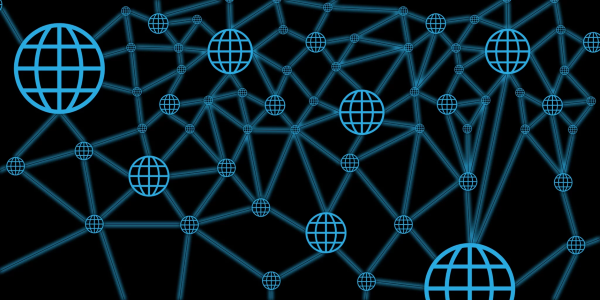 The current web is called web 2.0 and is an improvement over the first web. This web which we use for blogging, emails, chats and even basic read only content changed the use of web to a more user involved web. It also made humans more digital with newer devices that support it. However, the main drawback of the current web is the centralized control of several organizations which affect privacy of users. Thus, a newer web, web 3.0 is being researched to improve drawbacks of current web known as decentralized web.
The current web is called web 2.0 and is an improvement over the first web. This web which we use for blogging, emails, chats and even basic read only content changed the use of web to a more user involved web. It also made humans more digital with newer devices that support it. However, the main drawback of the current web is the centralized control of several organizations which affect privacy of users. Thus, a newer web, web 3.0 is being researched to improve drawbacks of current web known as decentralized web.
Generations of the web
Web 1.0 was the first generation of the web. It is known as the ‘read-only web’ as the content is only viewed, but not modified. For example, a website which shows products and their descriptions is a web 1.0 website. The early users had seldom necessity to build content over what was shared. Therefore, users only viewed content shared by the website.
However, with content sharing methods such as forums, social media, blogs and email the “read-only” web grew to a writable web. This created the web 2.0 known as the “read-write web”. For example, social media allows users to upload media, share existing content, create posts and edit content. It also helped introduce portable devices such as smartphones, tablets and even technologies such as the cloud which we use at present.
The web 2.0 gave rise to many tech companies which control much of the content on the Internet at present. Social media caused the big data boom, newer operating systems for phones and other small digital devices were created. However, content sharing is restricted based on terms that the user had to comply. In the cloud, the location where the data is saved is only visible to certain authorized parties. Users share content in the web 2.0 but they rarely know who view their data, who spy their data and for what other tasks, it is being used. In other words, user privacy is restricted in this generation.
Web 3.0 aims to reduce this authority over users by decentralized systems where data is not owned by a single entity. Privacy is somewhat ensured than is that in current Internet by distributing the rights to several people in 3.0. Distributed ledgers are one such technology that might help web 3.0 to be useful. Web 3.0 also is called the “Semantic Web” because machines could read the “data” sent or received in the web similar to humans.

Peer-to-peer communication
Peer-to-peer communication means use of machines in a network to share files and communications without requiring a central server. Each node is called a peer and each peer requests content from other peers. Several methods of peer-to-peer communications exist. One popular method is the centralized database which stores all client details. When a request for a content is sent, it searches where it is stored and sends them back to the client. Another method is the query method where all clients are searched, until a match is returned. Hybrid methods of these two methods also are used.
The advantage of peer-to-peer communication is that it does not require an authority to store content shared by users. In the majority of these peer networks, each peer is granted equal rights and access for media and data. Therefore, decentralized web is possible with these networks.
Image courtesy: https://www.blog.computes.com






